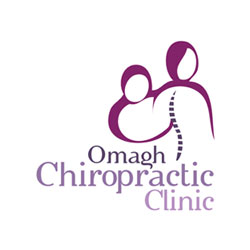The Mega Benefits of Omega-3’s

These Healthy Fats Belong in Everyone’s Diet
The Fat Family Tree
The family of fat is very complex, so to make it less confusing, picture it as a family tree. At the top, there are two different families of fat—saturated fat and unsaturated fat. Saturated fat (butter is one example) is packed with hydrogen atoms, making it solid at room temperature. Unsaturated fat (like olive oil) contains fewer hydrogen atoms, so it is liquid at room temperature. The family of unsaturated fat includes two children: monounsaturated fat and polyunsaturated fat. In the polyunsaturated fat family, you’ll find omega-6 fatty acids and omega-3 fatty acids, and it is the omega-3 family that has been making headlines in the nutrition world.
3 Types of Omega-3’s
There are actually three types of fatty acids that are collectively referred to as omega-3’s: ALA (alpha-linolenic acid), EPA (eicosapentaenoic), and DHA (docosahexaenoic acid). Besides being hard to pronounce, they are extremely important to your health. Omega-3’s are “essential” fatty acids, because they are necessary for health and must be included in your diet (because the human body cannot manufacture them on its own). But what exactly are they used for, and what do they do for human health?
Mega Health Benefits
Extensive research indicates that omega-3 fats reduce inflammation, helping to prevent inflammatory diseases like heart disease and arthritis. In addition to warding off inflammation, omega-3’s are also essential to the brain, impacting behavior and cognitive function, and are especially necessary during fetal development. According to the University of Maryland Medical Center (UMM), omega-3’s may also:
- Improve artery health by helping to reduce plaque buildup and blood clots in arteries that lead to the brain.
- Improve cholesterol by lowering triglycerides and elevating HDL (good cholesterol) levels. These benefits come primarily from DHA and EPA. Learn more about fats that fight cholesterol.
- Improve joint health by reducing joint tenderness and stiffness associated with arthritis and osteoarthritis.
- Improve bone health by positively impacting the body’s calcium levels, reducing the incidence of bone loss.
- Improve mental health by helping to insulate nerve cells in the brain, allowing these nerve cells to better communicate with one another. People who are deficient in omega-3’s may suffer from depression, bipolar disorder, schizophrenia, eating disorders, and ADHD.
- Improve skin health by helping to alleviate symptoms related to skin disorders like acne and psoriasis.
- Improve bowel health by reducing inflammation of the bowels, helping alleviate symptoms of Crohn’s disease and ulcerative colitis.
- Improve lung health by reducing inflammation in diseases like asthma.
- Improve menstrual health by reducing the pain associated with PMS and menstruation.
- Help prevent cancer. Colon, breast, and prostate cancers have all been correlated with low intakes of omega-3’s.
Sources of Omega-3’s
The three different types of omega-3’s are found in specific types of foods.
- ALA is found in foods of plant origin. The richest source of ALA is flaxseed, but it is also found in hempseed, canola oil, soybeans, soybean oil, pumpkin seeds, pumpkin seed oil, linseeds, walnuts, and walnut oil. Once ingested, the body converts ALA into EPA and DHA, allowing it to be more readily used by the body. However, this conversion isn’t very efficient. That’s why experts recommend including EPA and DHA sources in your diet as well. *Note: Flaxseed oil supplements are available in liquid and capsule form, but always consult your health care provider before taking any supplements.
- DHA is found in seafood, algae, and coldwater fish such as salmon, sardines and albacore tuna. *Note: Fish oil supplements and vegetarian DHA supplements (containing algae) are also available in liquid and capsule form, but always consult your health care provider before taking any supplements. Only use fish oil supplements that have been certified to be free of heavy metal contaminants like mercury.
- EPA is found in many of the same foods as DHA, including cold-water fish such as salmon, and sardines, as well as cod liver, herring, mackerel, and halibut. *Note: Fish oil and vegetarian algae supplements are also good sources of EPA, but always consult your health care provider before taking any supplements. Only use fish oil supplements that have been certified to be free of heavy metal contaminants like mercury.
- Enriched eggs that contain all three types of omega-3 fatty acids are readily available these days. These eggs are enriched by adding flaxseed or algae to the hens’ diets so that they produce eggs that are rich in healthy fats. According to the Flax Council, omega-3-enriched eggs provide almost half of the recommended daily level of ALA and one-quarter of the recommended daily level of EPA and DHA—the same amount that can be found in 3 ounces of fish.
To get the recommended levels all types of omega-3’s, aim for:
1 serving daily of Nordic oil. In general, fresh fish contain more DHA and EPA than frozen fish. *Click Here to learn more about the Fish oil we sell here in the clinic.
Omega-3’s might seem overwhelming at first. But once you understand the types and “mega” health benefits that come with them, you’ll be on your way to improving your health. Now that’s something to brag about!




